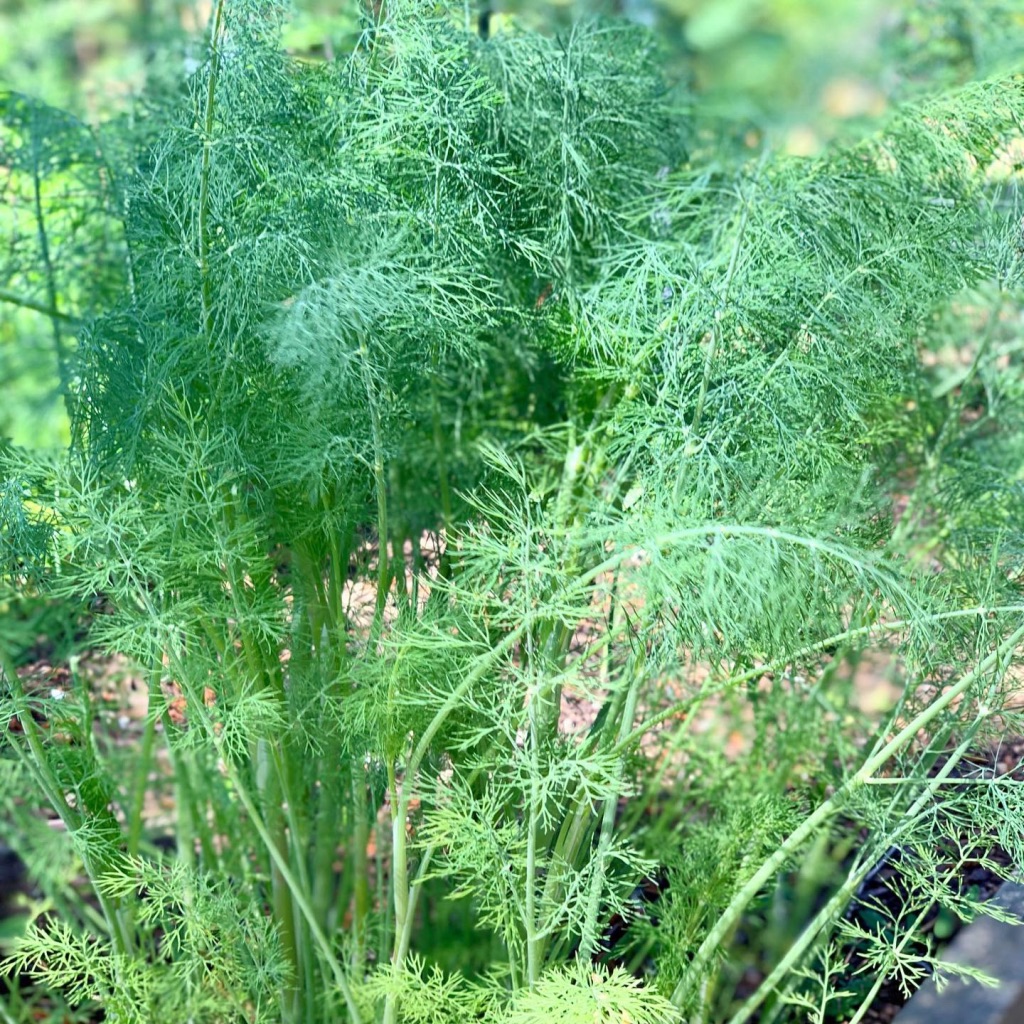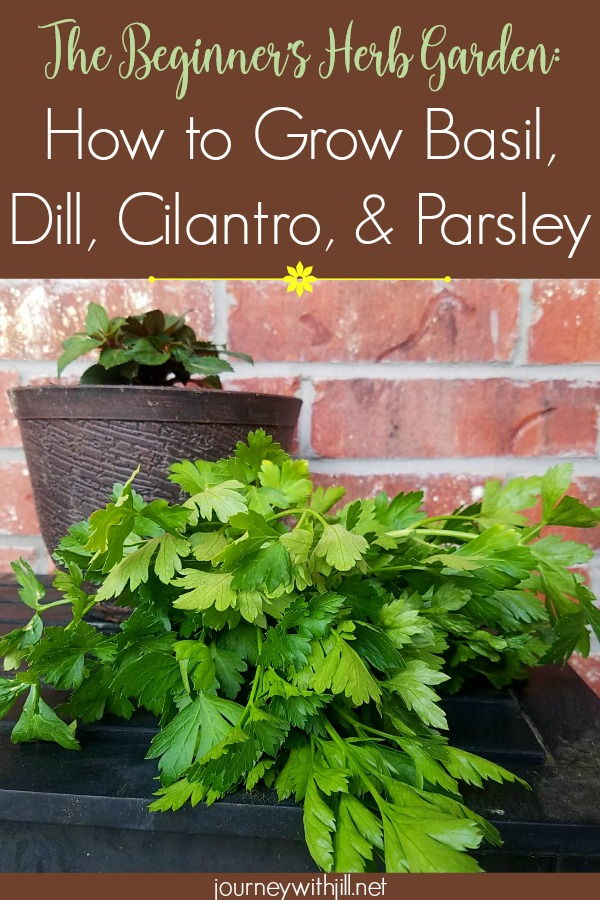How to Grow Annual Herbs: Basil, Dill, Cilantro, and Parsley
I didn’t plan on growing an herb garden when I first began my gardening journey, but eventually I found learning how to grow herbs. I had no idea the benefits of growing herbs would far exceed my main purpose: saving money.
Herbs are still my #1 crop to grow to save money at the grocery store. Have you looked at the prices of herbs recently? But if you grow your own, you get a seemingly endless supply for a fraction of the cost.
Plus, the benefits of growing herbs go beyond cost. Nothing compares to the flavor — both when you eat them fresh or if you preserve them on your own. And although I haven’t ventured into this area much, they also have numerous health and medicinal benefits.
In today’s episode of the Beginner’s Garden Podcast and in the blog post below, I’ll tackle the most common “annual” herbs in my area. These are the ones that don’t come back year after year. Click below to listen.
How to Grow Basil, Dill, Cilantro, and Parsley
Basil
Basil is a warm-weather herb that cannot tolerate frost. You can plant it either as a transplant from your garden center or from seed. If you plant it from seed, you can start it indoors about the same time as you begin your tomatoes, and transplant it after the danger of frost has passed. If you plant the seed directly in the garden, wait until the soil temperature has warmed to about 70 degrees, or a couple of weeks after your last frost.

Basil grows well in either the garden or in a container. They can grow very tall and wide, depending on their space. It’s not uncommon for mine to take up a square yard.
The key to growing basil is to harvest the leaves early and often. Basil is one herb that lives to reproduce, which means it will start producing a seed stalk before you know it. To prevent this seed stalk from forming (because the quality of the leaves will decline when this happens), keep it trimmed and harvested, never harvesting more than 1/3 of the leaves at one time. Here is a video of how I prune my basil, preventing it from producing the seed stalk:
VIDEO: How to Harvest Basil Leaves all Summer
There is an upside to basil wanting to reproduce. If you do it right, you’ll never have to buy basil again.
I have several basil plants, and I usually keep one trimmed for fresh use, and the others I let go to seed. The bees love them. After the white flowers emerge, they will dry out, and then you can harvest the black seeds for next year’s planting. You can either plant these directly in the garden or start them early indoors.
VIDEO: How to Save Basil Seeds
Another option is this: You can do what I do and pick the entire plant at the end of the season (around your last frost) and crumble the dried leaves (with seeds) in the areas of the garden bed you’d like basil to grow. I did this last year in the beds I knew I’d have tomatoes growing. I got many volunteers this way and it was far less tedious than harvesting the little seeds. (Just make sure you don’t do this when the weather is still warm or they’ll sprout!)
Dill
Dill is another annual that you can grow all season. Somewhat more tolerant of frost, it likes more mild weather than basil. With my long season I usually have 2 generations per year if I allow it to go to seed.
Start from seed or buy transplant, but in my opinion, it’s so easy to grow from seed. (There’s a reason it’s called dill “weed.”) Plant it directly in the garden around the time of your average last frost.
When it’s young it produces feather-like leaves, which is your dill weed. I use this for ranch dressing mix and for marinated cucumbers. I also will pick it and let it dry, then crumble it for spice.

Dill doesn’t go to seed as quickly as basil, so you’ll get a longer harvest, but eventually it will start producing these upside-down umbrella-shaped clusters. These dry out and produce dill seed, which you can harvest for recipes like pickles. You can also let them drop into the garden and get another generation of dill.
Cilantro
Oh, cilantro, how I love you. But cilantro is the fussiest herb to grow. It hates hot weather and will quickly become bitter and go to seed. Unlike basil, when the seed stalk begins to form (and there is one, as opposed to many), the leaves become bitter. When you do have cilantro growing in your garden or patio containers, the key for cilantro is to harvest before you see that feathery seed stalk begin to form at the base. If you have any doubts, taste it and if it’s bitter you’ll know right away.
I’ve had better luck buying cilantro as a transplant and then letting its seeds self-sow for future plants. To do this, you allow the tall stalk to form flowers and then convert into seeds. Those seeds will fall and begin to sprout when the time is right — usually when the soil temperature is low. My best cilantro, in fact, usually starts to sprout in January.
Parsley
I recommend buying parsley as a transplant. I’ve planted parsley seeds before but they are SLOW at germination and this can take weeks — which means weeks of making sure the soil is moist and baby-sitting, and I don’t have time for that most seasons.
Parsley is a biennial, which means under ideal conditions, it will give you a season of full harvest the first year. Then, the second year (provided it survives the winter), it will send up its flower stalk to complete the life cycle. For this reason, you’ll want to start new parsley each season.
But like cilantro, it can start to form a seed stalk the first year if the weather warms too quickly (in my experience). The bottom leaves can still be used, though they’re not as fragrant. After the flowers form, which are amazing at attracting beneficial insects, you can let the seeds drop, and baby parsley plants will emerge the next season.
Do you have any tips for growing these annual herbs? Leave a comment below!
Do you get overwhelmed with garden planning?

Subscribe here for my best tips to plan your garden in just 7 days -- all for FREE.
Plus, I'll send you my "In the Garden E-mail" on Fridays, periodic updates on garden resources relevant to you, and you'll receive access to my entire bank of free garden downloads!
You are also agreeing to our privacy policy.

